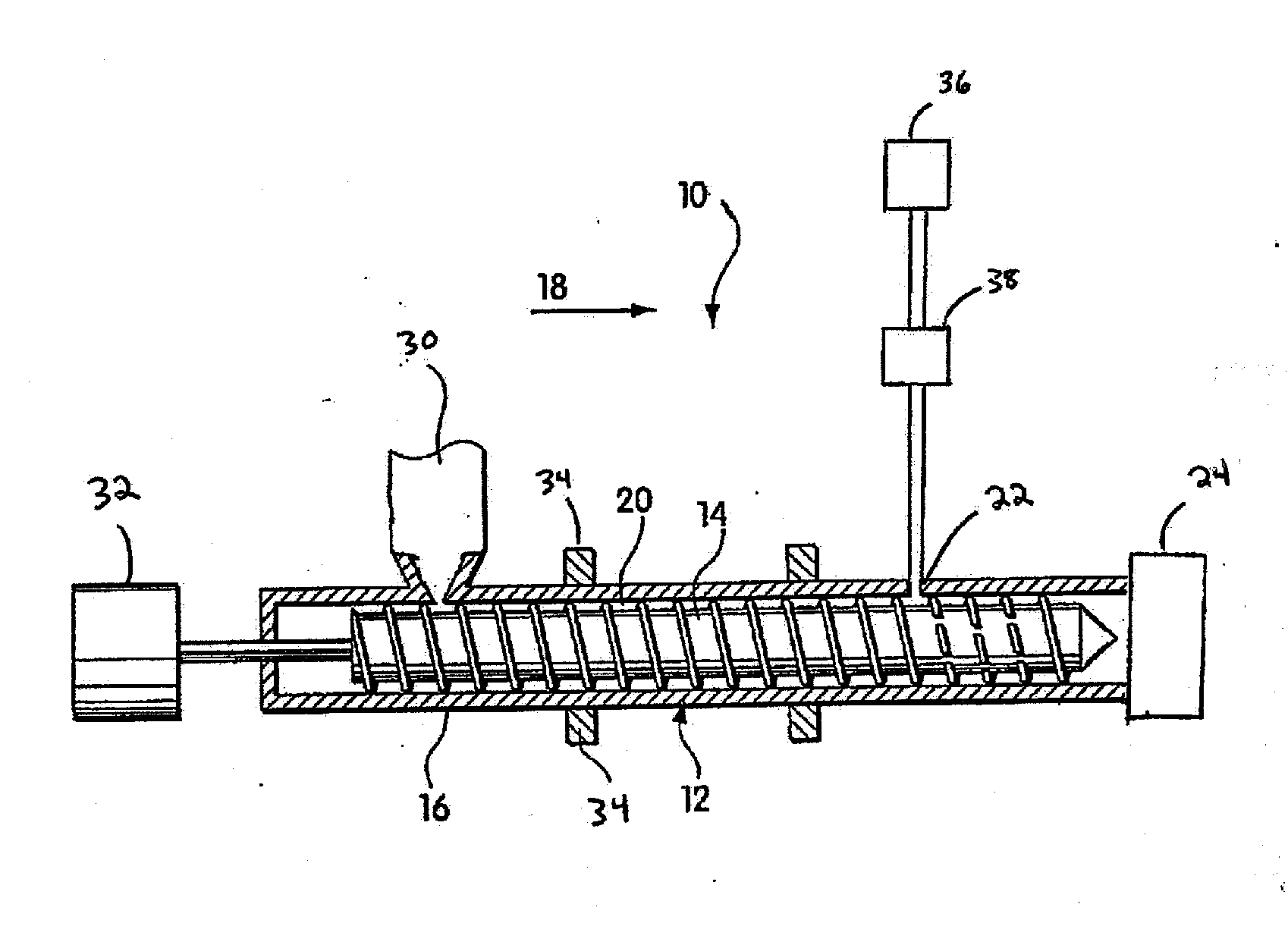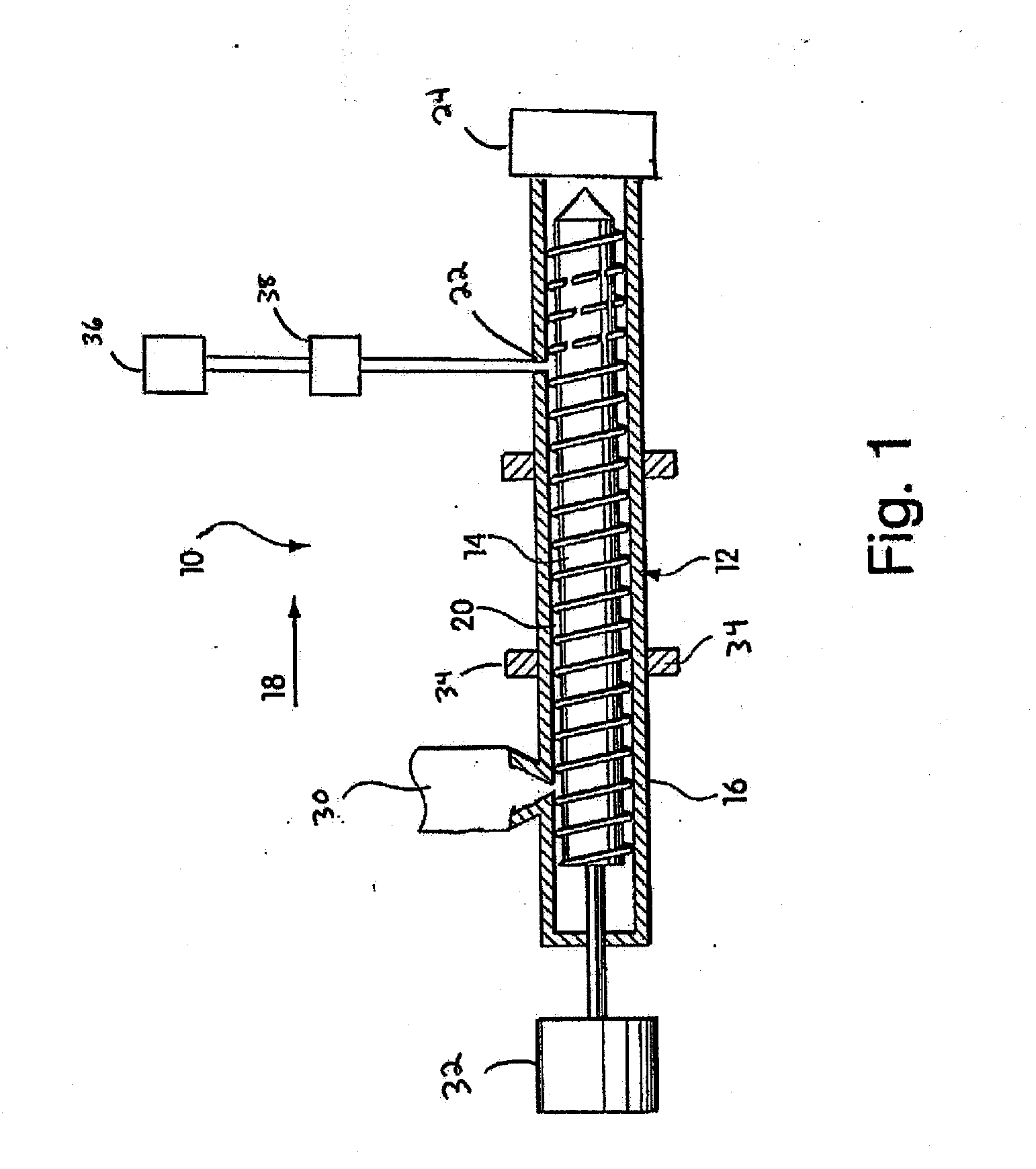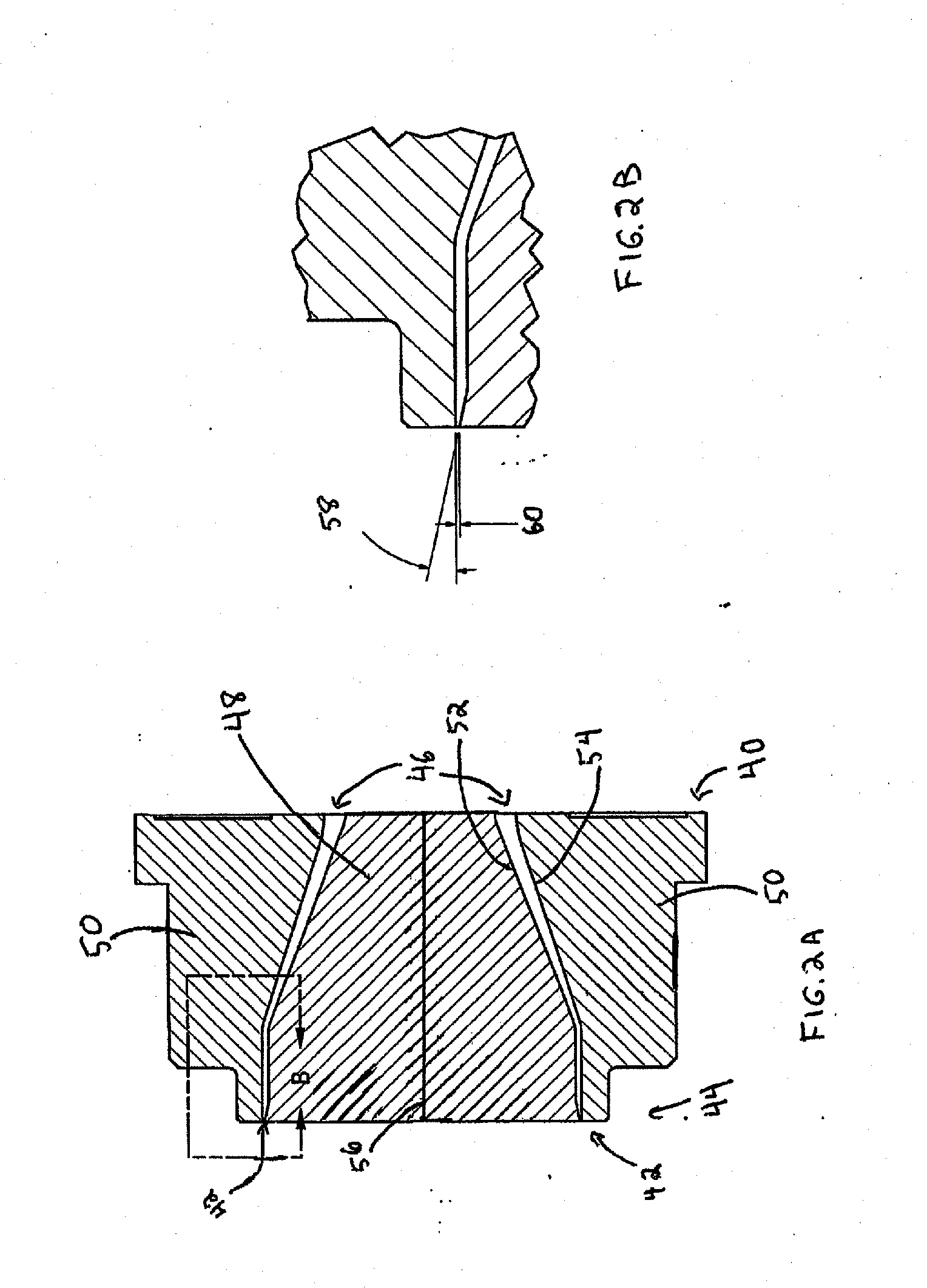Method of forming polymeric foam and related foam articles
a polymeric foam and foam article technology, applied in the field of polymeric foam, can solve the problems of difficult to maintain a quality, difficult to process certain polymeric materials (e.g., low melt strength polymeric materials) as foams, and cells to grow and/or become distorted, etc., to achieve softening of pellets, control viscosity, and facilitate melting
- Summary
- Abstract
- Description
- Claims
- Application Information
AI Technical Summary
Benefits of technology
Problems solved by technology
Method used
Image
Examples
example 1
PEBAX®
[0063]This example illustrates the production of a 3-layer polymer film comprising a PEBAX® foam layer and two solid LDPE skin layers which were subsequently separated from the PEBAX® foam layer.
[0064]A stream of polyether-block-amide was created in an extruder, as described above. Nitrogen was introduced through a multi-hole blowing agent port into the stream and created a mixture of nitrogen and PEBAX®. The percentage of N2 by weight is approximately 0.1% of the total mixture. The stream is mixed together in the extruder to form a single-phase solution.
[0065]Meanwhile, streams of LDPE (un-foamed) were introduced into the co-extrusion die (as the outside layers). With all 3 streams in the die head, they reached the exit and the pressure fell at the lip exit. The pressure reduction caused the middle layer to foam. The die lip taper angle was between 4 and 20 degrees while the gap was less than 0.012″.
[0066]The PEBAX® foam became encapsulated between the two skin layers as air ...
example 2
PVDF
[0068]This example illustrates the production of a 3-layer film comprising a polyvinylidene fluoride (PVDF) foam layer and two solid LDPE skin layers which were subsequently separated from the PVDF foam layer.
[0069]A stream of PVDF was created in an extruder. Nitrogen was introduced through a multi-hole blowing agent port into the stream and creates a mixture of nitrogen and PVDF. The percentage of N2 by weight is approximately 0.1% of the total mixture. The stream was mixed together to form a single-phase solution.
[0070]Meanwhile, 2 streams of LDPE (un-foamed) were introduced into the co-extrusion die (as the outside layers). With all 3 streams in the die head, they reached the exit and the pressure fell at the lip exit. The pressure reduction caused the middle layer to foam. The die lip taper angle was between 4 and 20 degrees while the gap was less than 0.012″.
[0071]The PVDF foam became encapsulated between two skin layers as air was used to blow up and make the internal bubb...
example 3
PLA
[0073]This example illustrates the production of a 3-layer film comprising a polylactide or poly(lactic acid) (PLA) foam layer and two solid LDPE skin layers which were subsequently separated from the PVDF foam layer.
[0074]A stream of PLA was created in an extruder. Nitrogen was introduced through a multi-hole blowing agent port into the stream and creates a mixture of nitrogen and PVDF. The percentage of N2 by weight is approximately 0.1% of the total mixture. The stream was mixed together to form a single-phase solution.
[0075]Meanwhile, 2 streams of LDPE (un-foamed) were introduced into the co-extrusion die (as the outside layers). With all 3 streams in the die head, they reached the exit and the pressure fell at the lip exit. The pressure reduction caused the middle layer to foam. The die lip taper angle was between 4 and 20 degrees while the gap was less than 0.012″.
[0076]The PLA foam became encapsulated between two skin layers as air was used to blow up and make the internal...
PUM
| Property | Measurement | Unit |
|---|---|---|
| angle | aaaaa | aaaaa |
| angle | aaaaa | aaaaa |
| taper angle | aaaaa | aaaaa |
Abstract
Description
Claims
Application Information
 Login to View More
Login to View More - R&D
- Intellectual Property
- Life Sciences
- Materials
- Tech Scout
- Unparalleled Data Quality
- Higher Quality Content
- 60% Fewer Hallucinations
Browse by: Latest US Patents, China's latest patents, Technical Efficacy Thesaurus, Application Domain, Technology Topic, Popular Technical Reports.
© 2025 PatSnap. All rights reserved.Legal|Privacy policy|Modern Slavery Act Transparency Statement|Sitemap|About US| Contact US: help@patsnap.com



